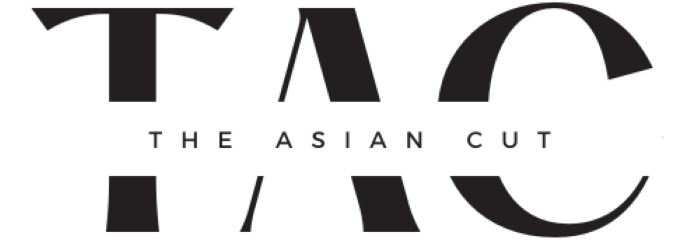Mohammad Rasoulof’s The Seed of the Sacred Fig is unforgiving. The film, written and directed by Rasoulof, follows the disintegration of a small middle class family in Tehran in the immediate aftermath of the Women, Life, Freedom movement that sparked in 2022. The protest, which went on to have global reverberations, was ignited by the death of Mahsa Amini, a 22-year-old Kurdish-Iranian student who was arrested while on a visit to Tehran by Iran’s morality police for apparently not adequately wearing a hijab. Witnesses reported that Amini was severely beaten by the police, with her death the direct result of police brutality.
The Seed of the Sacred Fig locates within patriarch Iman’s (Misagh Zare) family a microcosmic reflection of wider societal tension, collision, and revolution taking place on Tehranian streets in response to Mahsa’s death, depicting it all with gimlet-eyed precision and incendiary bite.
A lawyer working for the Iranian government, Iman sees his story as one of triumph over grim odds. To hear him describe it, Iman used nothing more than sheer will and studied diligence to lift himself out of the lower classes and into the middle, and will soon make significant headway into the highest echelons of society. The film begins with him having just been promoted to the position of state investigator for the Revolutionary Court, one step closer to becoming a judge. His wife Najmeh (Soheila Golestani, also an activist) is Iman’s stalwart supporter — Iman is the sun and she calibrates every one of her actions in service to him. Najmeh is mesmerized by Iman’s position as patriarch and civil servant.

Najmeh, as a character, offers a delicate study of the fanatic wife, and by extension of the ways in which men within her conservative society enshrine themselves as conduits for the divine, and as such, they expect their wives to become fanatic subjects. She rallies her daughters — Rezvan (Mahsa Rostami) and Sana (Setareh Maleki) — in line when Iman comes home, they must be quiet when he rests, and civil so as not to perturb him; they must be good and proper lest they tarnish Iman’s reputation as a political, public figure. They must remain good, upstanding women — online and in their private lives. No one should be able to level a complaint against Iman or his wife and daughters, for his wife and daughters must never do anything egregious, let alone participate in anti-government acts. But when the protests erupt in the streets beneath their luxe apartment, Rezvan and Sana can’t help but identify with Mahsa Amini, a young woman near to their own age, pulling towards the Women, Life, Freedom movement.
Iman’s promotion, meanwhile, means that he signs off on death sentences for activists involved in the protests. As Iman advances at work, his daughters become more and more disenchanted with him, and begin to increasingly ask him the kinds of questions those he sentences to death might ask. The girls rightfully see his position as head of the family and as judicial servant as exercises in despotic control of women’s minds and bodies.

Rasoulof’s film is heady and controlled, silently deafening. Filmed entirely in secret within the closed walls of an apartment in Tehran, The Seed of the Sacred Fig has, as a work of revolutionary art, in the aftermath of its release, greatly disrupted the lives of cast and director. Rasoulof currently lives in exile, for he was sentenced by Iran to eight years in prison and a flogging, while the rest of the cast has been able to flee to Europe. The state declared the film a threat to national security, understandably so, for the film makes use of civilian images and video footage, which bears witness to state-sanctioned and state-perpetrated violence against civilians, footage that authorities doggedly suppressed. The film with sober grace, holds Iran’s crimes to its face.
The film is a marvel for the ways in which it allows societal unrest to erupt in more than one place: first the streets and then within a small family’s apartment, where the past and the future — tradition and a yearning for freedom — violently collide in hushed whispers teetering on the edge of deafening screams. Iman’s eyes laced with burst veins bear down with a panicked violence upon Rezvan and Sana, who stand back from him with their chins in the ear and their glassy eyes storing away these moments as memories as evidence.
The Seed of the Sacred Fig stands as a triumphal film about the putridity at the core of totalitarian power, about the direct violence that women are immediately and constantly subject to in Iran, about terrifying fathers and their resilient daughters.
In December, The Asian Cut was fortunate enough to speak with Rasoulof over Zoom about his landmark film. The director, accompanied by translator Iante Roach, spoke about how The Seed of the Sacred Fig came to be made, and, most crucially, about a will to freedom and hope that young Iranian women embody.
The film begins with a title card describing how ficus religiosa propagates: “Ficus Religiosa is a tree with an unusual life cycle. Its seeds, contained in bird droppings, fall on other trees. Aerial roots spring up and grow down to the floor. Then, the branches wrap around the host tree and strangle it. Finally, the sacred fig stands on its own.”
The Asian Cut: I want to begin by asking you about the image of the seed of the sacred fig that you evoke with the film’s title and broadly throughout the film. I just can’t stop thinking about the juxtaposition of something that’s believed to be sacred, like the sacred fig, against the actual, biological behaviour of the seed, which is violent and suffocating. What was your thinking behind choosing this as the overarching image for the film?

Mohammad Rasoulof [translated by Roach]: As I wrote the treatment for the film, I remembered all of a sudden the story of this tree, and I thought it was very interesting because its behaviour represents many different ethical facets. It can tell a different story and represent a different ethics according to the perspective of each character, depending on which perspective you consider the story of the three from.
So for instance, if you look at the story of the tree’s life cycle from the perspective of the daughters and more generally of the young generation of Iran, it’s full of hope. If you look at it from the perspective of the father and what he does, his job, his actions, it’s probably violent and suffocating because of what the tree does to the other trees or to the older trees. And so it’s very versatile and it can be interpreted in many different ways.
TAC: On the note of the father, the patriarch — he, for me, is just so terrifying, but his fearsomeness is also something that’s very quiet and almost polite. He simmers until he just finally explodes. How did you go about constructing him as a character?
MR: So I think the most important aspect of Iman’s personality is his sar sepordeghee — I’ll say it in Persian because in Persian it means literally handing your head over to someone else who will do the thinking for you and whose decisions you shall follow. So we could translate it as submission to power or submission to ideology into English. Submission to power or ideology can cause fanatism and fanatism can cause violence. And so this was the chain, if you like, the development, that I wanted Iman to incarnate.
TAC: And then on the opposite end, you have Sana the daughter. She is also quiet like Iman, but in a way distinct to her: she is also beautifully radical. She’s just silently observing and withholding her opinions until the very end, at which point she’s just all action. What message do you want Sana to carry as a character?
MR: I’m so happy that you remarked on this point and that you brought it up, as this was so important to us. It’s something that we’ve really focused on in making the film: developing Sana as an observer and as a witness who eventually makes her own analysis and takes her own conclusions.
For me, Sana incarnates the young generation of Iran that took us all by surprise during the Woman, Life, Freedom movement with its courage, but also bi parva, again in Persian that means having no qualms and not hiding anything. [Sana represents] the way [this generation] openly expressed its demands from the government, and it didn’t just express them to the government by the way, it expressed them to the whole world; and the way that this young generation in Iran is stunning us all the time. And to this day. It’s as if it just didn’t pay any attention to the government. It just does its own thing.
TAC: Why did you choose to explore all these ideas around knowledge and control and power through family itself?
MR: That doesn’t require much thinking or even much designing in the sense that when you live under this kind of totalitarian system, you just need to look. And that’s the reality looking back at you in most families. Totalitarian systems try to interact with the most private sides of everyone’s life. I think the most important facet, or rather, the most important agent in this story is the way that the world today is so interconnected thanks to [the] internet. It’s a virtual sphere, how it modifies and creates new relationships, and how, on the other hand, the government, the state of Iran has no idea what to do with that because it’s beyond its own control.

TAC: I would be remiss if I didn’t ask about the conditions under which this film was made. You filmed in secret. Could you talk to me about the process of making the film itself? What was it like working with your actors? How did this get completed and become such a beautiful film?
MR: This would require a very long answer, but to sum it up, we had to take a series of decisions in order to heighten or increase the likelihood of wrapping the shoot. Of course, we weren’t certain we could make it, but we thought if we worked with a very small cast, crew, very light equipment, and if I were to direct remotely, then there would be greater chances.
Now, directing remotely—what it meant in this film was that instead of watching the monitor on set and giving directions on set, I watched the monitor in real time in another location. And from that other location guided and directed the filming, thanks to two assistants on set. One of them was in charge of image sounds and all the more technical sides of the film, [basically] relaying my direction to those departments. Whereas the other assistant was in charge of actors and the more artistic side of the crew.
TAC: It’s time to wrap up, I just wanted to thank you immensely for your time and for making this beautiful film.
















